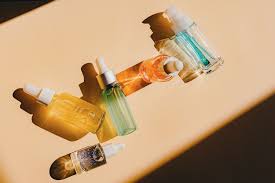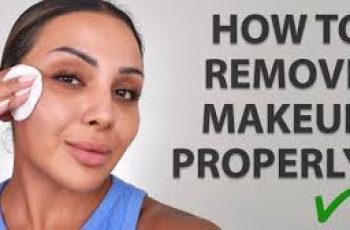
Everything You Need To Know About Kojic Acid
Kojic acid is a compound made by fermentation in fungi like Aspergillus and Penicillium. Fermented soy and rice products, like miso, soy sauce, and sake, naturally produce kojic acid.
Kojic acid is often used in skin-lightening products because it reduces skin pigmentation by blocking melanin production. This molecule gives color to the skin, hair, and eyes, but it’s also the cause of hyperpigmentation.1
Kojic acid is also used in some medications to treat skin conditions, such as melasma. Keep in mind that it can cause sun sensitivity and skin conditions like contact dermatitis, redness, and flares.2
Uses
Kojic acid has been used in the cosmetic, pharmaceutical, and food industries:
Cosmetics: Some cosmetic products use 0.4-4% kojic acid as a skin-lightening agent and to increase their shelf life.32 Kojic acid products are among the most expensive skin-lighteners, costing more per ounce than vitamin C and retinol products.4
Dental care products: Kojic acid can be used in dental products, like tooth-whitening patches.5
Medical: Kojic acid can help treat melasma, a condition that causes hyperpigmentation in the skin.5 Other medications, such as antimicrobial drugs, also contain kojic acid.6
Foods: Kojic acid has antioxidant properties. It is used as a food additive to preserve fresh vegetables, seafood, oils, flour, and syrup.67
Benefits
Kojic acid can improve skin hyperpigmentation. In a study of the effects of 3% kojic acid on post-acne skin, participants had increased skin brightness and decreased contrast.8
Kojic acid formulations are sometimes given as a topical adjuvant (additional treatment) to hydroquinone treatment, the most common treatment for melasma. While kojic acid can be prescribed in the United States for this treatment, the European Union, Australia, and Japan have banned it due to safety concerns.9
Other agents can be prescribed alone or in combination with hydroquinone to treat melasma.10 A meta-analysis indicated that kojic acid alone may improve melasma.5
Kojic acid may also have antimicrobial, anti-inflammatory, and antioxidant effects—though studies showing these benefits on human skin are limited.1
How To Use Kojic Acid
Kojic acid is mainly found in creams, serums, lotions, soaps, eye creams, sunscreens, and face washes at 0.4-4% concentrations.3 You can incorporate kojic acid products into your skincare routine to improve dark spots.11
Here are a few tips on how to use kojic acid products:
Use products with a maximum of 1% kojic acid: It is safer to use products with a maximum of 1% kojic acid unless your dermatologist advises otherwise.7
Try on a small area: Apply the product to a small patch of skin and monitor for a few days for any skin reactions. If your skin starts to itch or burn or a rash forms, stop using it and consult a dermatologist. Some products can cause irritation when during long-term use.
Always use sunscreen: Kojic acid and other skin-lightening agents can increase sun sensitivity. Sunscreen will help protect your skin from potential irritation and sun damage.2
Avoid using it on broken skin: Kojic acid is intended for topical use. If you have broken skin, wait until your skin has recovered before using kojic acid.2
Safety and Side Effects
According to the Scientific Committee on Consumer Safety, kojic acid is safe for cosmetic products at a concentration of up to 1%.7
Skin-lightening agents have gained popularity, leading to inappropriate sales and use of products for lightening skin tone. A study showed that while about 73% of people use skin-lightening agents to treat skin conditions, around 27% use them for general skin-lightening, and only about 23% consult a healthcare provider.1213
Pollock S, Taylor S, Oyerinde O, et al. The dark side of skin lightening: An international collaboration and review of a public health issue affecting dermatology. IJWD. 2021;7(2):158-164. doi:10.1016/j.ijwd.2020.09.0
Cosmetic products, including kojic acid, can cause skin conditions in some individuals. One case study found that face cream caused itching and burning in an individual. Tests confirmed it was due to the product’s 1% kojic acid, so be careful with kojic acid products if you have sensitive skin.14
Choosing a Kojic Acid Product
If you decide to buy a kojic acid product:
Use 1% kojic acid at most: The safety of higher kojic acid concentrations is not yet known.7
Check your other skincare products: You may already be using skin-lightening agents, such as azelaic acid, tranexamic acid, retinoids, and hydroquinone. Before adding another, remember that overusing them can cause long-term health and skin problems.13
Don’t buy homemade creams or products from unknown sellers: Skin-lightening products, including kojic acid products, can contain heavy metals and steroids.15 Steroids can improve skin conditions but should only be used with a prescription from a healthcare provider.16 Cosmetics don’t require U.S. Food and Drug Administration (FDA) approval, meaning there may be unsafe products on the market from irresponsible manufacturers.15 Avoid purchasing kojic acid products online from unknown sellers.
A Quick Review
Kojic acid can reduce skin hyperpigmentation, which is why it is commonly used in many skin-lightening cosmetics. It can also be used to treat melasma.
If you’re purchasing kojic acid products, choose one with a maximum concentration of 1% kojic acid, as the safety of higher concentrations is unknown. If you have sensitive skin, consult your dermatologist before using kojic acid—it can cause irritation and other skin conditions.


